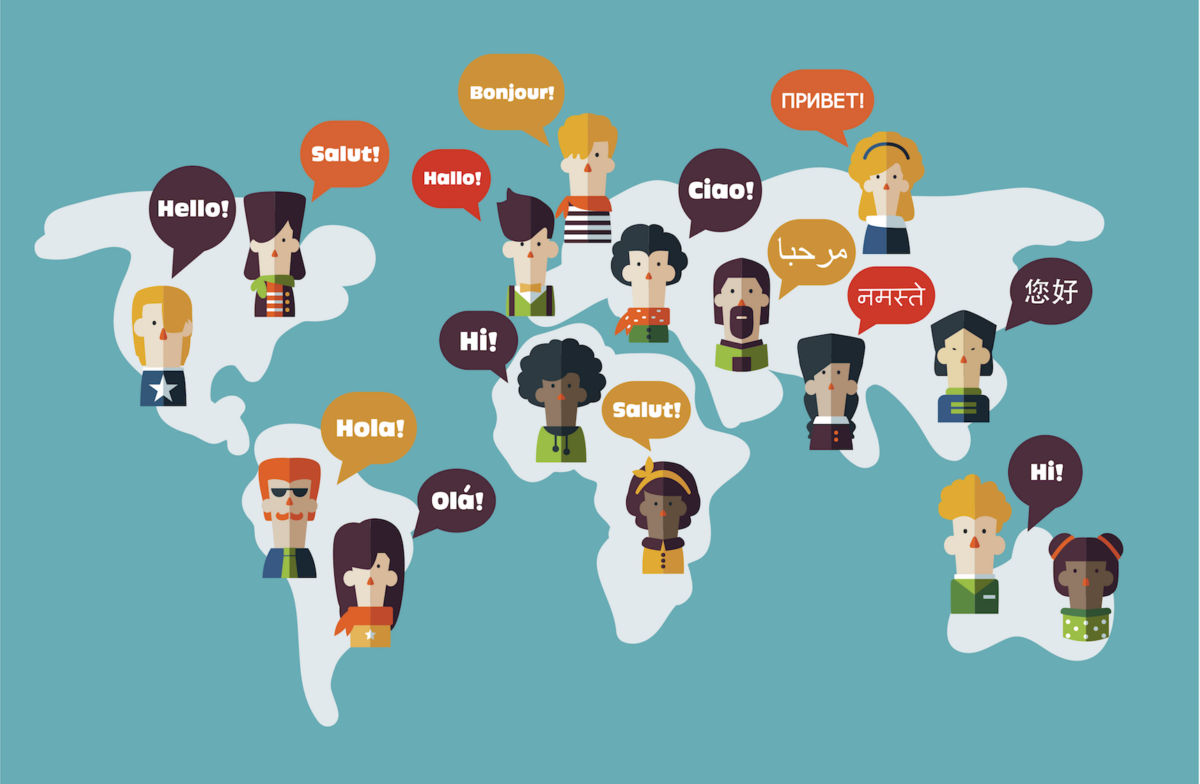This is language, a fascinating journey into the intricate world of human communication. Language, the cornerstone of our interactions, shapes our thoughts, conveys emotions, and connects us across cultures. This exploration delves into the depths of language, unraveling its complexities and revealing its profound impact on our lives.
From the intricacies of natural language processing to the captivating tapestry of language acquisition, this discourse promises an enlightening voyage through the multifaceted realm of language. Prepare to be captivated as we embark on this linguistic adventure, unlocking the secrets that lie within the very fabric of human expression.
Natural Language Processing
Natural language processing (NLP) is a subfield of artificial intelligence that gives computers the ability to understand and generate human language. NLP is used in a wide variety of applications, including machine translation, text summarization, question answering, and speech recognition.Language
plays a vital role in human communication. It allows us to express our thoughts and ideas, to share information, and to connect with others. Language is also a powerful tool for learning and problem-solving.However, natural language is also complex and ambiguous.
This makes it challenging for computers to understand and process. NLP researchers are working to develop new techniques to overcome these challenges and to make NLP more effective.
Challenges of Natural Language Processing
There are a number of challenges associated with natural language processing. These challenges include:*
-*Ambiguity
Natural language is often ambiguous. This means that the same word or phrase can have multiple meanings, depending on the context. For example, the word “bank” can refer to a financial institution or to the side of a river.
-
-*Complexity
Natural language is complex. It is made up of a large number of words and rules. This makes it difficult for computers to parse and understand.
-*Variability
Natural language is variable. It changes over time and from place to place. This makes it difficult for NLP systems to be generalizable.
Despite these challenges, NLP is a rapidly growing field. NLP researchers are making significant progress in developing new techniques to overcome these challenges and to make NLP more effective.
Linguistics
Linguistics is the scientific study of language. It encompasses the analysis of language structure, meaning, and use. Linguistics is a diverse field that includes many subfields, such as phonetics, phonology, morphology, syntax, semantics, pragmatics, and sociolinguistics.
Levels of Linguistic Analysis
Linguistic analysis can be conducted at different levels, including the following:
- Phonetics: The study of speech sounds, including their production, transmission, and perception.
- Phonology: The study of the sound system of a language, including the rules that govern the combination of sounds.
- Morphology: The study of the structure of words, including the rules that govern the formation of new words.
- Syntax: The study of the structure of sentences, including the rules that govern the combination of words into phrases and clauses.
- Semantics: The study of the meaning of words, phrases, and sentences.
- Pragmatics: The study of how language is used in context, including the rules that govern the interpretation of utterances.
- Sociolinguistics: The study of the relationship between language and society, including the ways in which language is used to express social identity and to interact with others.
Relationship Between Language and Culture
Language and culture are closely intertwined. Language is a product of culture, and it reflects the values, beliefs, and practices of the people who speak it. For example, the English language contains many words that relate to the Christian religion, such as “church,” “priest,” and “sacrament.”
This is because Christianity has been a major influence on English-speaking cultures for centuries.
Conversely, culture can also influence language. For example, the Japanese language has a complex system of honorifics, which are used to express respect for others. This is because Japanese culture places a great emphasis on politeness and social hierarchy.
Evolution of Language Over Time
Languages are constantly evolving. They change in response to changes in the cultures that speak them. For example, the English language has changed significantly over the past few centuries. This is due in part to the influence of other languages, such as French and Spanish.
It is also due to changes in the way that people live and work.
The evolution of language is a complex process that is still not fully understood. However, it is clear that language is a dynamic and ever-changing phenomenon.
Language Acquisition

Language acquisition is the process by which humans acquire the capacity to use language. It involves learning the sounds, grammar, and vocabulary of a language, as well as the social and cultural rules that govern its use.
First language acquisition, or native language acquisition, is the process by which children learn their first language. It typically begins in infancy and continues throughout childhood. Second language learning, or foreign language learning, is the process by which people learn a language other than their native language.
It can occur at any age, but it is generally more difficult for adults than for children.
Theories of First Language Acquisition
There are several theories about how children acquire their first language. One theory, known as the nativist theory, argues that children are born with an innate ability to learn language. This theory suggests that children have a universal grammar, which is a set of rules that all languages share.
Another theory, known as the empiricist theory, argues that children learn language through experience. This theory suggests that children learn language by imitating the speech of the people around them.
Stages of Second Language Learning
Second language learning typically occurs in four stages: the pre-production stage, the early production stage, the speech emergence stage, and the fluency stage. In the pre-production stage, learners have very little ability to produce speech in the second language. In the early production stage, learners begin to produce simple sentences in the second language.
In the speech emergence stage, learners begin to produce more complex sentences in the second language. In the fluency stage, learners are able to speak the second language fluently and accurately.
Factors that Influence Language Acquisition
There are a number of factors that can influence language acquisition, including age, motivation, exposure to the language, and individual differences. Age is a major factor in language acquisition, with children generally being more successful at learning a second language than adults.
Motivation is also a key factor, with learners who are more motivated to learn a language being more likely to succeed. Exposure to the language is another important factor, with learners who are exposed to the language more frequently being more likely to acquire it.
Individual differences also play a role in language acquisition, with some learners being more successful than others.
Language Variation: This Is Language
Language variation is the occurrence of different forms of a language within a speech community. It can be found in various aspects of language, including pronunciation, grammar, vocabulary, and usage.
There are several factors that can contribute to language variation, including geographical location, social class, ethnicity, age, and gender. These factors can influence the way people speak, and the variations that result can have a significant impact on communication.
Causes of Language Variation, This is language
There are several factors that can contribute to language variation, including:
- Geographical location:People who live in different geographical areas may speak with different accents, use different words, and have different grammatical structures.
- Social class:People from different social classes may use different language styles, which can reflect their level of education, income, and occupation.
- Ethnicity:People from different ethnic groups may have different ways of speaking that reflect their cultural heritage.
- Age:People of different ages may use different language styles, which can reflect their generation and life experiences.
- Gender:Men and women may use different language styles, which can reflect their gender roles and expectations.
Impact of Language Variation on Communication
Language variation can have a significant impact on communication, both positive and negative.
- Positive impact:Language variation can help to create a sense of identity and belonging for people who share a common language. It can also be a source of creativity and innovation, as people experiment with different ways of speaking.
- Negative impact:Language variation can sometimes lead to misunderstandings and communication breakdowns. This can be especially true when people from different language backgrounds are trying to communicate with each other.
Language and Technology

Technology has become an integral part of language learning and use. It has made language learning more accessible and engaging, and it has also had a significant impact on the way we use language.
Role of Technology in Language Learning
Technology can be used to support language learning in a variety of ways. For example, language learning apps and software can provide learners with interactive exercises, personalized feedback, and access to authentic materials. Online language courses and communities can connect learners with native speakers and other learners from around the world.
Impact of Technology on Language Use
Technology has also had a significant impact on the way we use language. For example, social media and messaging apps have led to the development of new forms of language, such as internet slang and emojis. The internet has also made it easier for people to communicate with each other across borders and cultures, which has led to increased exposure to different languages and dialects.
Examples of How Technology Can Be Used to Analyze Language
Technology can be used to analyze language in a variety of ways. For example, corpus linguistics uses computer software to analyze large collections of text, which can be used to identify patterns and trends in language use. Natural language processing (NLP) is a field of artificial intelligence that uses computer algorithms to understand and generate human language.
NLP can be used to develop language translation tools, chatbots, and other applications that can interact with humans in a natural way.
Closure

In conclusion, this is language has illuminated the vast and captivating landscape of human communication. Through an exploration of its complexities, we have gained a deeper appreciation for the power of language to shape our world. As we continue to unravel its mysteries, language will undoubtedly remain an inexhaustible source of fascination and inspiration.
General Inquiries
What is the role of language in human communication?
Language serves as the primary medium through which humans convey thoughts, emotions, and ideas. It enables us to connect with others, share knowledge, and navigate the complexities of social interactions.
How does natural language processing contribute to our understanding of language?
Natural language processing employs computational techniques to analyze and interpret human language. This field plays a crucial role in developing technologies such as machine translation, speech recognition, and text summarization, enhancing our ability to interact with computers and access information.
What are the key factors that influence language acquisition?
Language acquisition is influenced by a combination of factors, including exposure to the language, cognitive abilities, social interactions, and individual motivation. Both nature and nurture play significant roles in shaping our linguistic skills.